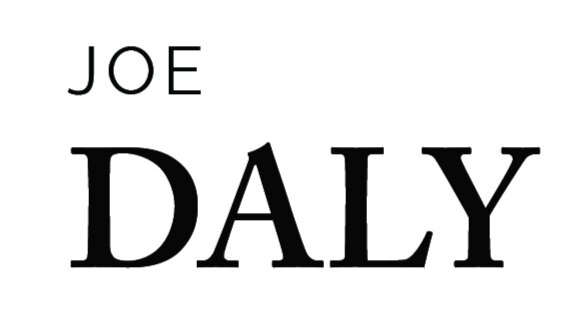The Savage Rhythms of the 70s: When Rock and Roll Danced with Grindhouse Madness
Image credit Joe Daly 2023
Can we finally snuff out the teetering, bloated trope of the 70s as the generation of hippies, peace and flower power? Those ten years were nothing of the sort. Quite the opposite, the 70s were a time of scalding chaos, hostile rebellion and a dangerous flirtation with chemically-fueled decadence. America was knee-deep in the muck of the Vietnam War and her increasingly-ornery youth — disillusioned by the utter unattainability of the so-called 'American Dream' — found solace in a world of roaring guitars, angry lyrics and the blood-spattered screens of grindhouse theaters.
“Grindhouse” refers to those sleazy, dilapidated movie palaces, tucked away between squalid rooming houses and windowless bars in seedier parts of towns, where one could smoothly disappear into a bizarro world of cheap thrills, lurid tales and low-budget shocks. These weren’t the cerebral cinematic juggernauts of Fellini or Kubrick, they were the OG B-movies — quick cash grabs for the producers and quick fixes for slasher junkies. The quintessential grindhouse film unleashed a cacophonous orgy of blood, sex, and cheap thrills crafted not for art but for pure, unadulterated adrenaline. These films proudly stood as the bloody antithesis to Hollywood's glossy lies and haughty moralistic blather. A celluloid middle finger to propriety, reveling in its own sleaze. The cinema of the damned, for the damned. Pure, undiluted madness.
Rock and roll came up in the 60s and by the turn of the decade, it had split into a sonic onslaught of exhilarating new genres, pulsating with sharp riffs, immersive grooves and guitar solos that often felt like self-contained works of art by themselves. This music was the lifeblood of the emergent generation and while starchy politicians took fibbing to soaring new heights and soldiers died on foreign soil by the thousands, swaggering, virtuosic shredders like Hendrix, Page and Iommi authored the soundtrack to this generation's angst and rebellion. It was not the sugary, sanitized version of rock sold in the 50s; it was harder, louder and angry as hell. It was the sound of a rampaging pack of young, hungry wolves violently tearing away at the bloody carcass of the old guard.
Enter the grindhouse, where the very essence of this new worldview played out not just audibly but visually. Rock’s role in 70s grindhouse films cannot be understated. The music didn’t just accompany these films; it was an integral part of their soul. The wailing guitar riffs matched the shrieks of the damsels in distress. The thumping bass lines pulsated menacingly with the heartbeats of the anti-heroes. The psychedelic solos mirrored the druggy interludes where reality morphed into bad trips with badder men. The music and the movies were one, each feeding endlessly off the other.
Consider the reality-scraping 1967 Peter Fonda film, The Trip. While it predates the 70s, its disorienting psychedelic visions were accompanied by a siege of hard-driving rock tracks that paved the way for the symbiotic relationship soon to blossom in the coming decade. Taking the relationship to its logical apex, classics like Switchblade Sisters and Rolling Thunder used rock soundtracks to more than simply set the mood; the music gave voice to the narratives.
But why rock? Why not jazz or blues? The answer is simple: grindhouse films were more than just hastily-scripted tales of gore and violence; they were stories of rebellion. Of individuals against the system, of misfits against the mainstream, of the marginalized against the privileged. And the emergent rock movement, with its roots in teenage rebellion and anti-establishment ethos, was the perfect match. The establishment had television, big studios, and the mainstream radio. The rebels had grindhouses, garage bands and pirate radio stations.
Moreover, just as rock was roundly dismissed by not just moralists but by the older generation of rockers as a fad or as "the devil's music," grindhouse films were lustily scorned by mainstream critics and audiences. Yet both forms endured and indeed, proliferated through the years, surviving more than just critics but ever-shifting cultural trends and the encroaching menace of technology into art. Today, latter day titans like Tarantino and Rodriguez pay reverential homage to those grindhouse aesthetics and rock and roll continues to fill stadiums across the globe.
In a decade universally renowned for its hedonism and excess, grindhouse films and hard rock served as powerful counterweights. One was a visual trip, the other auditory. Both modalities offered potent and immediate forms of escapism but unlike the dreary picket fence daydreams of a Leave it to Beaver episode, this was a white-knuckled joyride, hurtling through a dark and twisted rural road in the middle of the night with a knife at your throat. It was a wrinkled, toothless face, reeking of booze and paranoia screaming at the top of their lungs in a deafening, soul-emptying catharsis.
In the grim tapestry of the 70s counterculture, grindhouse films and rock and roll were threads of bright, brazen color. They were unapologetic, raw, and real. They remain beloved by insiders and offensive to everyone else. With the evolution of special effects and society’s collective indifference to hyperviolence, it would be easy but to cast these movies as quaint relics from a distant past. But precious few modern slasher films boast even a small fraction of the soul of those monuments of 70s grindhouse. They just don't make 'em like that anymore.


